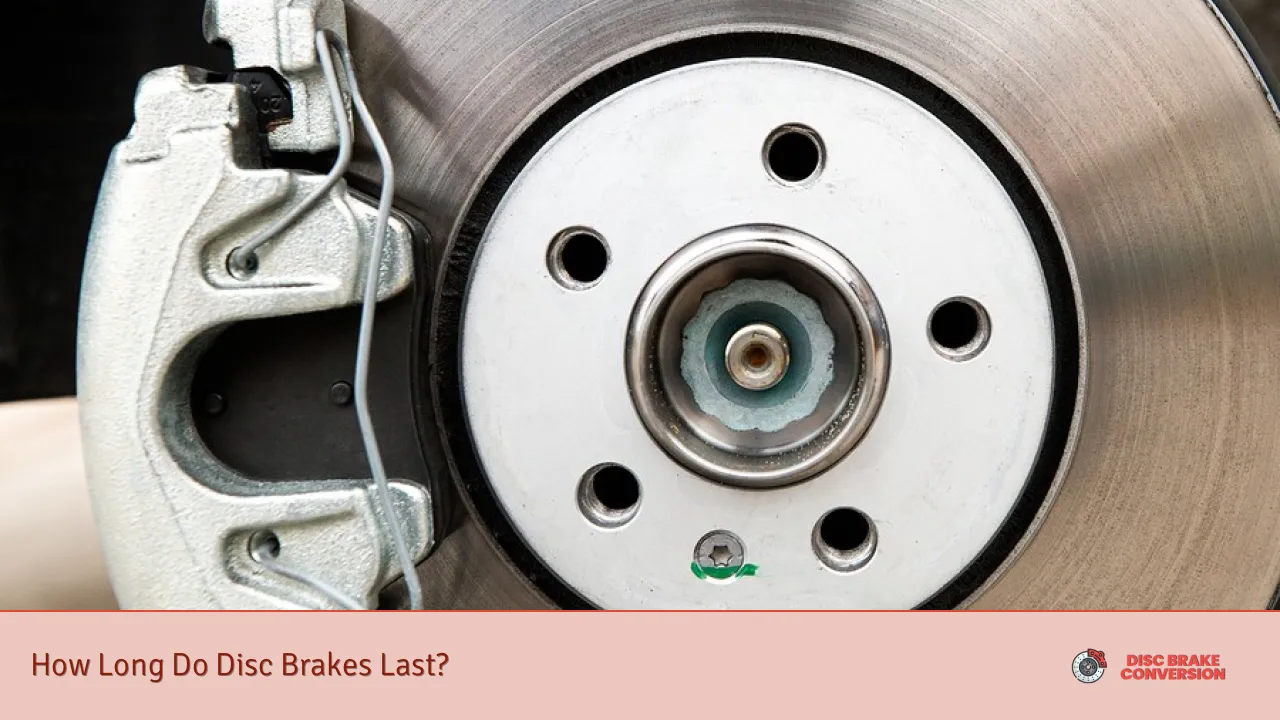Disc brakes are a critical component of modern automotive braking systems, providing reliable stopping power and enhanced safety. Understanding the lifespan of disc brakes is essential for vehicle maintenance and ensuring optimal performance. Generally, disc brakes can last between 50,000 and 80,000 miles, depending on various factors such as driving habits, vehicle type, and maintenance practices. This article will delve into the factors affecting the longevity of disc brakes, signs that indicate when they need replacement, and tips for extending their lifespan.
Factor Impact on Lifespan Driving Style Aggressive driving can reduce lifespan. Vehicle Type Heavier vehicles may wear brakes faster. Maintenance Regular checks can extend lifespan. Road Conditions Paved roads are less harsh than off-road.
Understanding Disc Brake Lifespan
Disc brakes operate by applying friction to a rotating disc (rotor) using brake pads. This friction generates heat, which is dissipated through the rotor. The lifespan of disc brakes is influenced by multiple factors including driving style, vehicle weight, and road conditions.
Aggressive driving habits such as hard braking and rapid acceleration can lead to premature wear of brake components. Conversely, smooth driving techniques can help prolong the life of your brakes. Additionally, heavier vehicles exert more force on brake components, leading to faster wear. For example, SUVs and trucks may require more frequent brake replacements compared to lighter cars.
Regular maintenance plays a crucial role in extending the lifespan of disc brakes. Routine inspections can identify issues before they become severe, allowing for timely replacements of worn-out parts. Furthermore, road conditions significantly impact brake wear; driving on rough or unpaved roads increases stress on braking systems.
Signs That Your Disc Brakes Need Replacement
Recognizing when your disc brakes need replacement is vital for safety. Common signs include:
- Squeaking or squealing noises when braking
- Vibration or pulsation in the brake pedal
- Reduced braking efficiency or longer stopping distances
- Warning lights on the dashboard
Squeaking noises often indicate worn brake pads that need replacement. If you experience vibrations while braking, this could signal warped rotors that require attention. Additionally, if your vehicle takes longer to stop than usual, it may be time to have your brakes inspected.
Ignoring these warning signs can lead to more severe damage to the braking system and increase repair costs. Therefore, it’s crucial to address any unusual behavior promptly.
Factors Affecting Disc Brake Longevity
Several factors influence how long disc brakes last. Understanding these can help you take steps to maximize their lifespan.
- Driving Habits: Aggressive braking and frequent short trips can increase wear.
- Type of Vehicle: Heavier vehicles like trucks and SUVs typically wear out brakes faster than lighter cars.
- Brake Quality: Higher-quality brake pads and discs often last longer.
- Environmental Conditions: Areas with heavy rainfall or snow may require more frequent replacements due to corrosion.
By modifying driving habits—such as avoiding sudden stops and maintaining a safe distance from other vehicles—you can significantly enhance the longevity of your brakes.
Maintenance Tips for Extending Brake Life
Proper maintenance is essential for maximizing the lifespan of your disc brakes. Here are some effective strategies:
- Regularly inspect brake pads and discs for wear.
- Keep brake components clean from dirt and debris.
- Ensure proper alignment of wheels to prevent uneven wear.
- Use high-quality brake pads made from durable materials.
- Avoid overloading your vehicle, which puts extra strain on brakes.
Implementing these maintenance practices will not only extend the life of your disc brakes but also improve overall vehicle safety.
Cost Considerations for Brake Replacement
Replacing disc brakes involves costs that vary based on several factors:
- Type of Vehicle: Luxury or performance vehicles often have higher replacement costs.
- Quality of Parts: Premium parts may cost more but offer better performance and longevity.
- Labor Costs: Rates vary by location and service provider.
On average, replacing disc brakes can range from $300 to $800 per axle, including parts and labor. Regular maintenance can help avoid unexpected expenses related to premature brake failure.
FAQs About How Long Disc Brakes Last
- How long do disc brakes typically last?
Disc brakes generally last between 50,000 and 80,000 miles. - What factors affect the lifespan of disc brakes?
Driving habits, vehicle weight, maintenance practices, and road conditions all play a role. - How can I tell if my disc brakes need replacing?
Squeaking noises, vibrations during braking, and warning lights are common indicators. - Is it expensive to replace disc brakes?
The cost typically ranges from $300 to $800 per axle. - Can I extend the life of my disc brakes?
Yes, by adopting smoother driving habits and performing regular maintenance.
Conclusion
Understanding how long disc brakes last is crucial for vehicle safety and maintenance planning. By recognizing the signs that indicate when they need replacement and implementing proper care practices, drivers can enhance their braking system’s performance and longevity. Regular inspections combined with mindful driving habits will ensure that your disc brakes serve you well over time.

